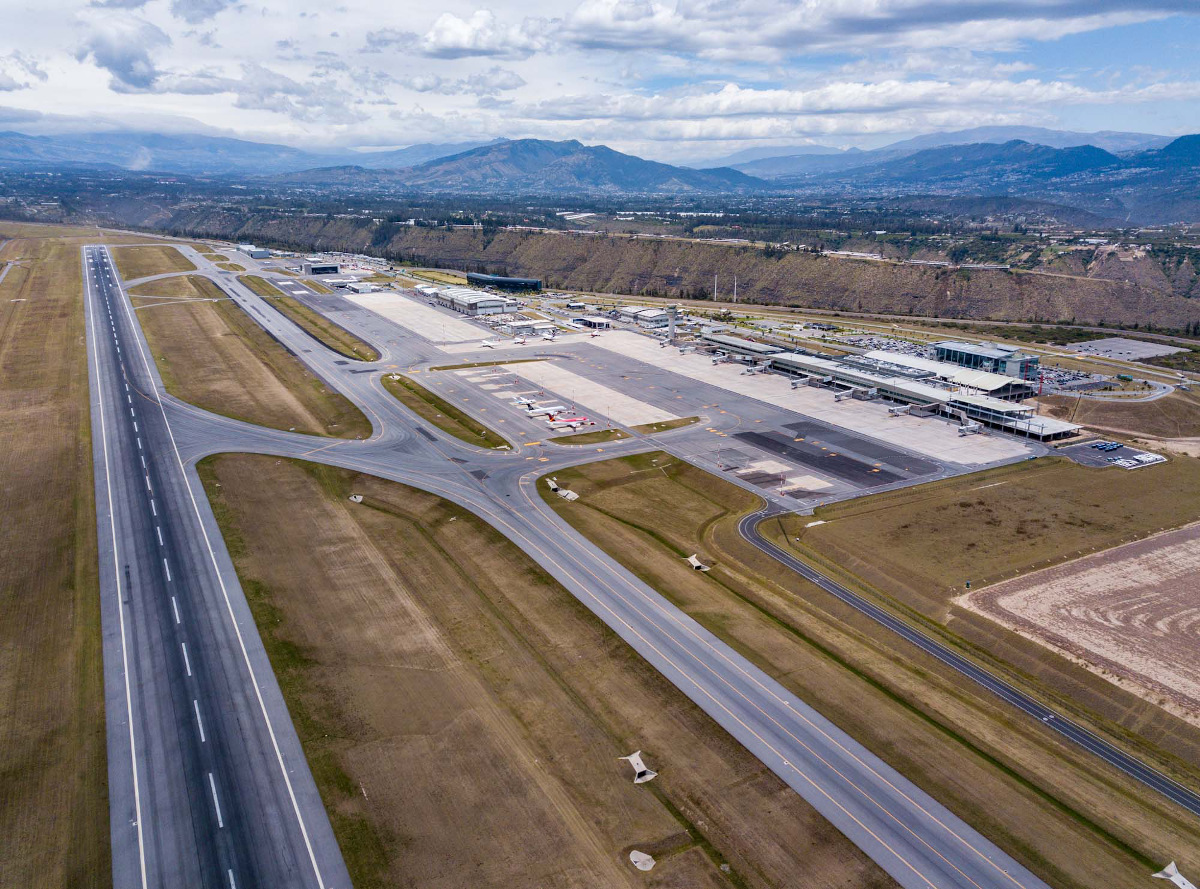Quito airport reports runway conditions with a new international format
| Company | Quito International Airport |
|---|---|
| Date | 05.11.2021 |
The Safety Management System of Corporación Quiport – the company that manages and operates the Mariscal Sucre International Airport in Quito – informs that, as of yesterday, November 4, the Global Reporting Format for Runway Surface Conditions, the standardized methodology in the airline industry to assess and report on the condition of the aerodrome runway surface, also known as GRF, will come into effect.
 This methodology was designed by the International Civil Aviation Organization (ICAO), with the support of key international organizations of the air transport industry and whose objective is to harmonize on a global scale the system with which the state of runway surfaces are reported at airport around the world. The GRF standardizes the language and terminology among all industry players: aircraft manufacturers, aerodrome operators, aircraft operators, air navigation service providers (ANSP), meteorological services, the Aeronautical Information Management (AIM), among others.
This methodology was designed by the International Civil Aviation Organization (ICAO), with the support of key international organizations of the air transport industry and whose objective is to harmonize on a global scale the system with which the state of runway surfaces are reported at airport around the world. The GRF standardizes the language and terminology among all industry players: aircraft manufacturers, aerodrome operators, aircraft operators, air navigation service providers (ANSP), meteorological services, the Aeronautical Information Management (AIM), among others.
The GRF provides that aerodrome operators must determine a “runway status code” for each third of the runway that will inform the conditions in each of these sectors, as well as the presence or absence of foreign substances in each third, such as snow, frost, standing water, etc.
 This runway status report will be communicated to the personnel of the control tower (ATC) and the Aeronautical Information Service so that it is disclosed to the crews and all relevant actors within the airport operation.
This runway status report will be communicated to the personnel of the control tower (ATC) and the Aeronautical Information Service so that it is disclosed to the crews and all relevant actors within the airport operation.
The adoption of this global format will undoubtedly be a fundamental contribution that will reinforce the operational safety of the air transport industry, since it provides essential information to pilots for timely decisions on takeoffs and landings according to the climatic variations of the airports and the expected performance of each aircraft.
Ramón Miró, president and CEO of Corporación Quiport commented that “for us, as operators of one of the best airports in the region, it is of vital important to be up-to-date with industry standards and regulations in order to guarantee a safe and efficient operation. I congratulate our Operational Safety, Maintenance and Certification teams for aligning the Quito airport to this new international standard”.
The GRF is a critical tool for reducing the risk of runway excursions – when an aircraft taking off or landing exceeds the limits of the paved runway surface – which is one of the most important areas of focus for Operational Safety teams the world over.
Before the adoption of this standardized methodology, friction measurements were carried out with specialized equipment, which were then reported to the aircrews, with the disadvantage that they did not precisely reflect how the performance of the aircraft would be affected since, in addition to the state of the runway, the braking efficiency of each aircraft depends on factors such as: type of aircraft, its weight, operational tools available to the pilot, among others.
Contact
Tababela S/N - Via
Quito 170907
Ecuador
- +593 2-395-4260

